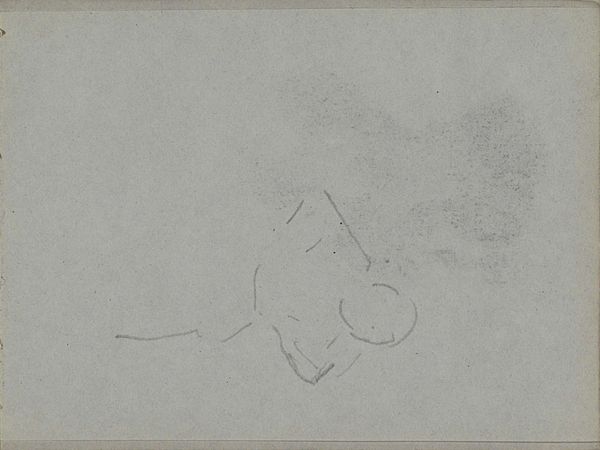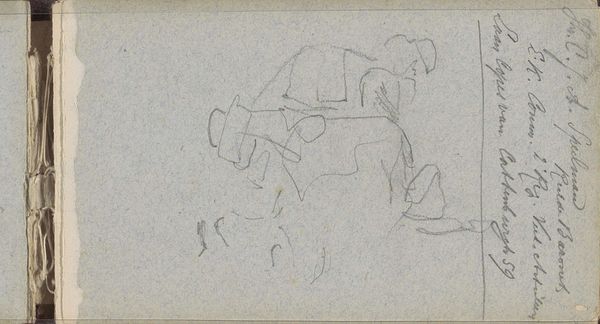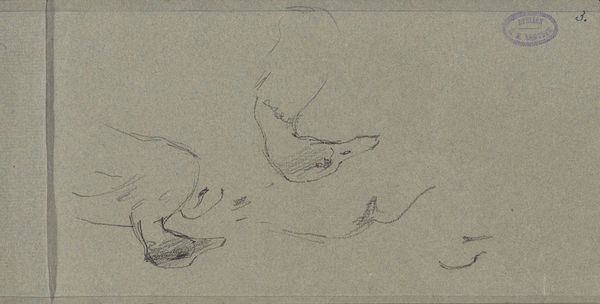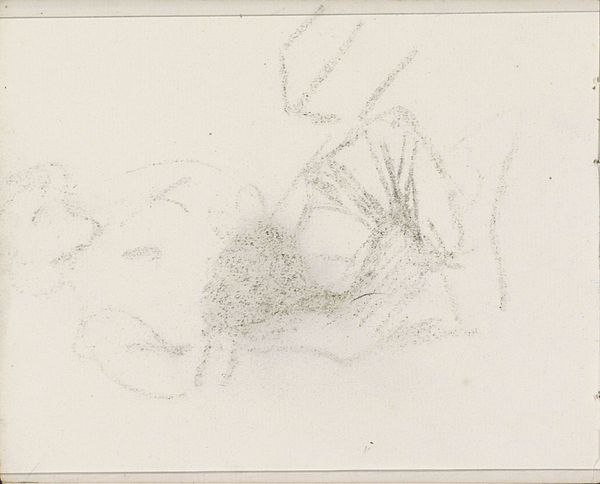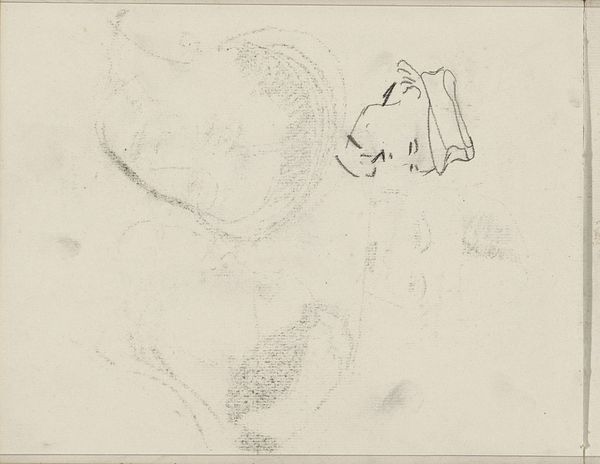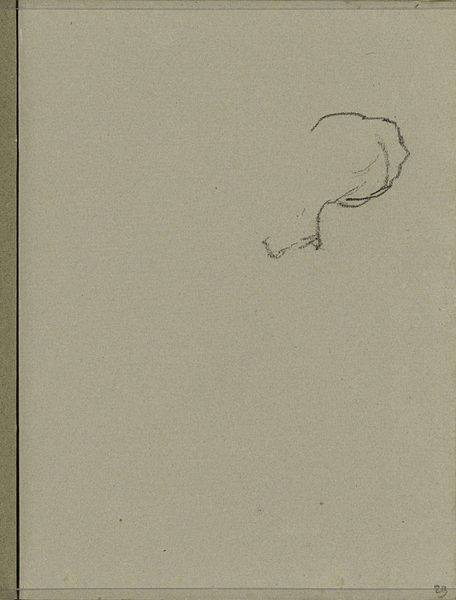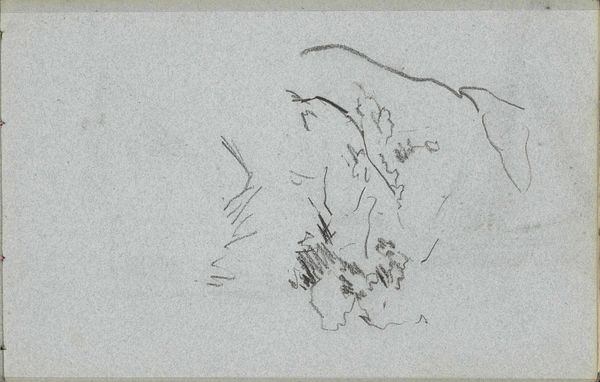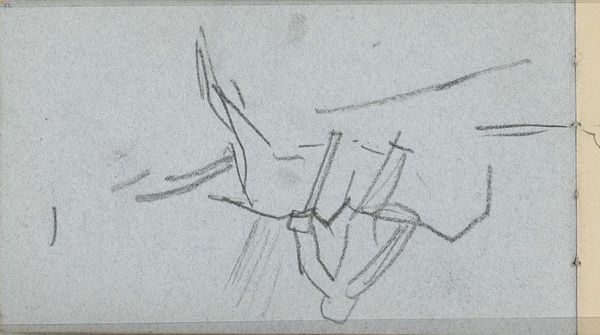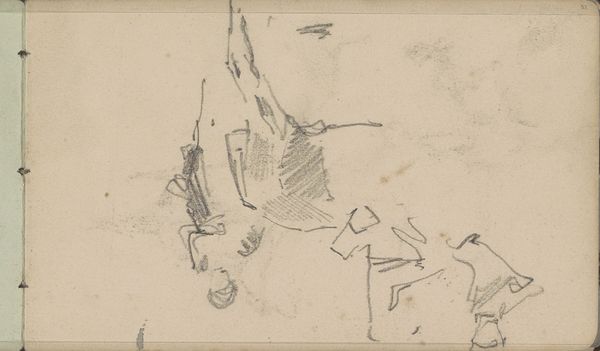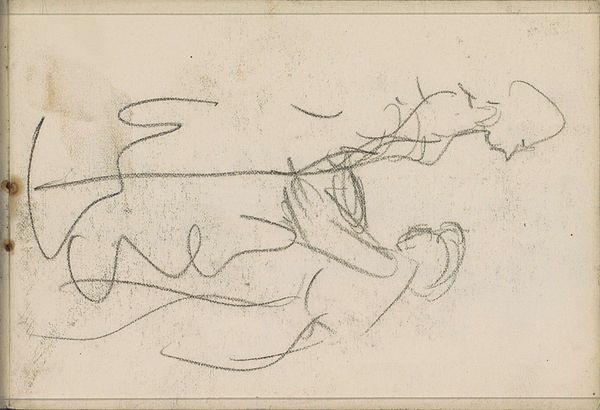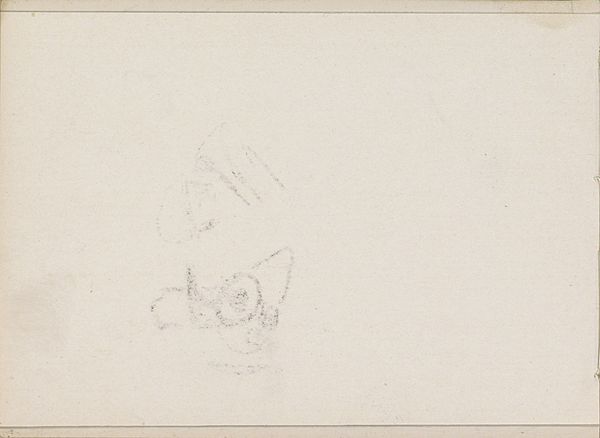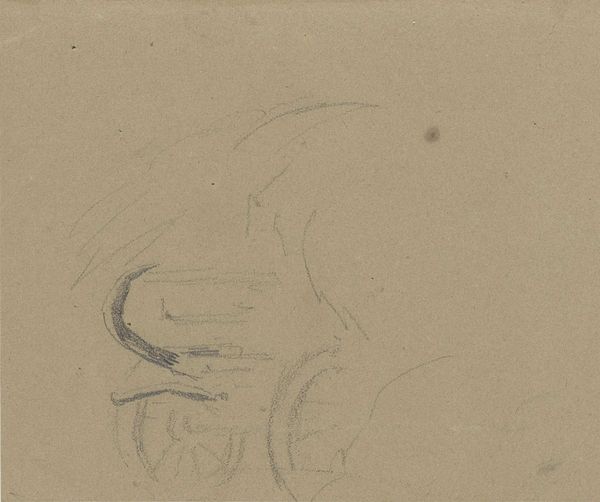
drawing, pencil, graphite
#
drawing
#
amateur sketch
#
light pencil work
#
sketched
#
incomplete sketchy
#
hand drawn type
#
figuration
#
personal sketchbook
#
idea generation sketch
#
pencil
#
graphite
#
sketchbook drawing
#
sketchbook art
#
initial sketch
Copyright: Rijks Museum: Open Domain
Editor: This is *Figuurstudies*, a pencil drawing by Isaac Israels, made sometime between 1875 and 1934, and currently held at the Rijksmuseum. The figures are lightly sketched and almost fade into the background. What stands out to me is how raw and immediate it feels. How do you interpret the significance of a work like this existing within a major museum collection? Curator: It's crucial to understand that museums shape how we value art. This sketchbook page, likely never intended for public display, offers an intimate glimpse into Israels' artistic process. The Rijksmuseum's decision to exhibit it elevates the "sketch" to the level of "art," prompting us to consider how artistic labor is valued and canonized. Who decides what’s worthy of display? Editor: That's fascinating. I hadn't really considered how its presentation changes its meaning. So, this isn't necessarily about *what* is depicted but *why* it's being shown? Curator: Precisely! This raises questions about the institution’s role in shaping our perception of the artist. Was it meant as personal reflection, experimentation, or merely as groundwork for future pieces? The choice to frame it changes it from private musing to a public artwork, making the process itself, not just the polished final product, a point of interest. How might this affect our expectations of art in general? Editor: I guess it democratizes the idea of art. It becomes less about unattainable perfection and more about the journey of creation. Seeing the messy beginnings is almost encouraging. I see now how powerful it can be to show process. Curator: Exactly. The politics of display can be subtle but incredibly influential in shaping our understanding and appreciation of art. Thinking about *why* this sketch is here helps us unpack broader social and historical contexts surrounding art production. Editor: This has given me a whole new perspective to think about art's purpose, thanks! Curator: It’s a pleasure to reconsider these assumptions and discover novel purposes within museum practices.
Comments
No comments
Be the first to comment and join the conversation on the ultimate creative platform.

